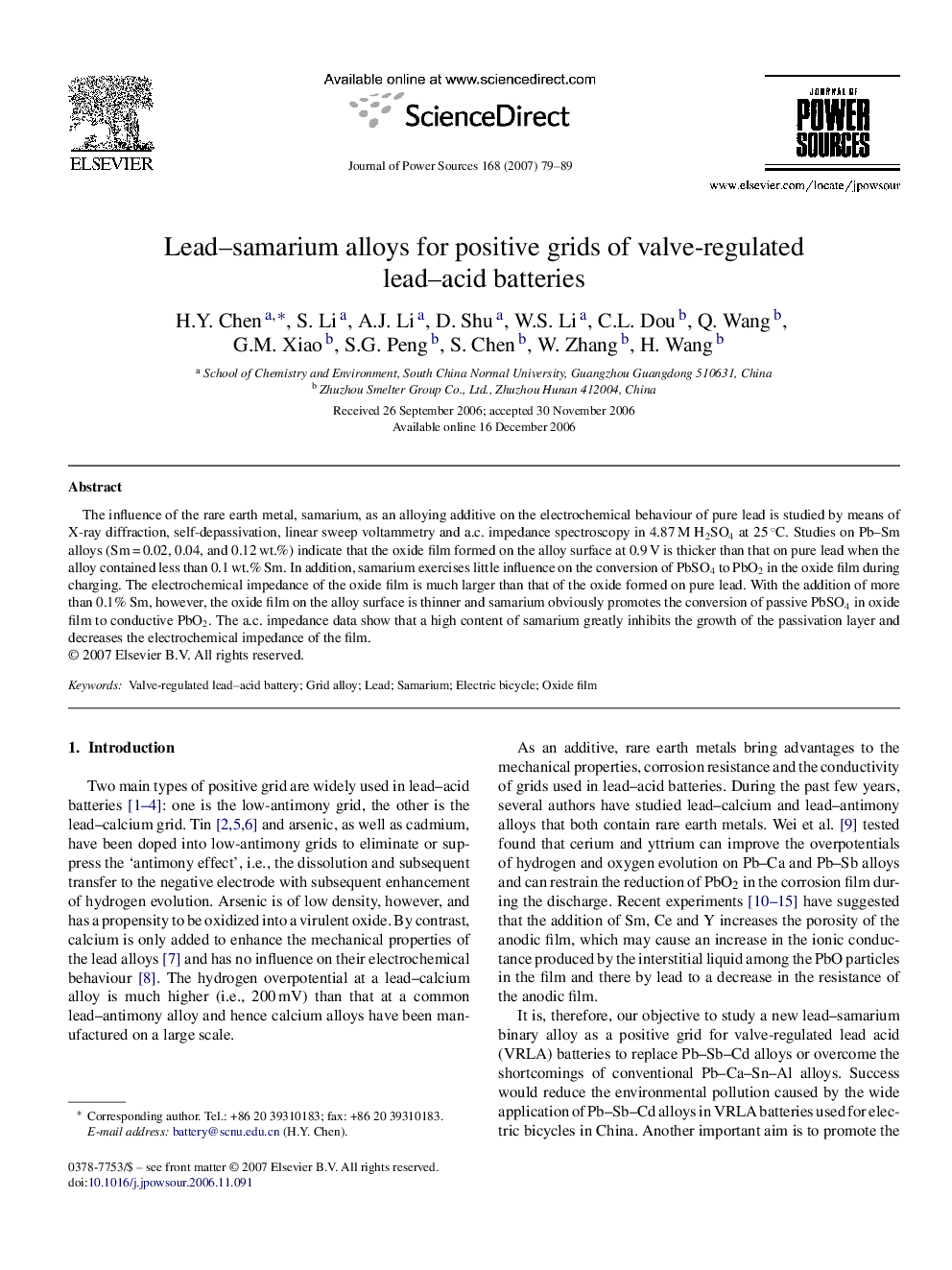| Article ID | Journal | Published Year | Pages | File Type |
|---|---|---|---|---|
| 1286532 | Journal of Power Sources | 2007 | 11 Pages |
The influence of the rare earth metal, samarium, as an alloying additive on the electrochemical behaviour of pure lead is studied by means of X-ray diffraction, self-depassivation, linear sweep voltammetry and a.c. impedance spectroscopy in 4.87 M H2SO4 at 25 °C. Studies on Pb–Sm alloys (Sm = 0.02, 0.04, and 0.12 wt.%) indicate that the oxide film formed on the alloy surface at 0.9 V is thicker than that on pure lead when the alloy contained less than 0.1 wt.% Sm. In addition, samarium exercises little influence on the conversion of PbSO4 to PbO2 in the oxide film during charging. The electrochemical impedance of the oxide film is much larger than that of the oxide formed on pure lead. With the addition of more than 0.1% Sm, however, the oxide film on the alloy surface is thinner and samarium obviously promotes the conversion of passive PbSO4 in oxide film to conductive PbO2. The a.c. impedance data show that a high content of samarium greatly inhibits the growth of the passivation layer and decreases the electrochemical impedance of the film.
